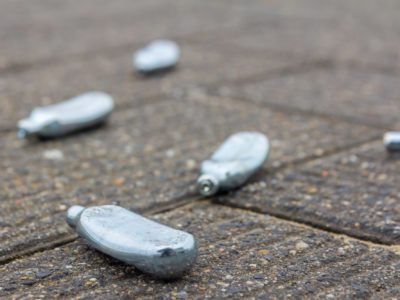Who is Addicted to Inhalant Drugs?
When someone can’t control themselves and their inhalant abuse and they know inhalant abuse has negative consequences, it is considered an inhalant addiction. Some have a desire to quit abusing inhalants, but they aren’t able to because of their addiction. In addition to this, inhalants are more readily available than not, and this makes it difficult for individuals to quit no matter how hard they try.
Those who use inhalants frequently will develop a dependency on the drug, whether it be psychological, physical, or both, this can lead to brain damage and other extreme effects. When it comes to who uses them most, teenagers use inhalants the most. Somewhere between 13 and 16 percent of 8th graders use inhalants. What’s most interesting about this is that the same percentage of individuals that age use marijuana. Call Behavioral Health Centers today at 772-774-3872 if you or a loved one is struggling with addiction to inhalant drugs.

What Are Inhalant Drugs?
Inhalants produce substances that evaporate easily at room temperature and produce effects that alter the mind for a short period. Inhalant drugs work by depressing the central nervous system. This can cause a person to feel dizzy, lightheaded, and confused. This is similar to the effects of alcohol. In extreme cases, it can cause sudden sniffing death.
Inhalant drugs are particularly dangerous because they are often easily accessible through household or commercial products. Inhalants are a very general term that acts as a very wide umbrella for more specific kinds of the drug itself. One part of this, however, remains consistent: the method.
Types of Inhalant Drugs
Inhalants are often referred to as huff, hippie crack, laughing gas, and more. This is because it involves the misuse of cleaning products, gas, and anesthetics. Anesthetics are gases that are used to reduce pain sensitivity, most commonly for surgery. Nitrous oxide nitrates (better known as ‘laughing gas’) and chloroform are both different kinds of anesthetics.
It is specifically used by dentists, but how do people wind up getting it? Well, the answer is quite simple. Nitrous oxide is also used in cans of whipped cream, which is where most people get it from so that they may abuse it.
Another type of inhalants that is commonly used is called Amyl Nitrite. The practical use of this drug involves treating individuals for heart disease by using inhalants to increase an individual’s blood flow. What separates this inhalant from the rest is its primary function as a muscle relaxant.

Classes of Inhalant Drugs
Inhalants can be broken up and categorized into four classes:
- Solvents
- Aerosols
- Gases
- Nitrites
Solvents
Different kinds of volatile solvents include the following:
- Paint Thinners
- Dry-Cleaning Fluid
- Marker Fluid
- Correction Fluid
- Lighter Fluid
- Gasoline
- Glue
- Nail Polish
- Nail Polish Remover
Aerosols
Different kinds of aerosols include the following:
- Spray Paint
- Hair Spray
- Spray Deodorant
- Spray Vegetable Oil
Gases
Different kinds of gases include the following:
- Propane Tanks
- Butane Lighters
- Whippets
- Ether
- Laughing Gas
- Freon
Nitrites
Different kinds of Nitrites include the following:
- Room Odorizer
- Video Head Cleaner
- Leather Cleaner
How Are Inhalant Drugs Used? The Huffing Technique
Inhalants are used most commonly by a technique called ‘huffing’. Huffing is what is referred to when someone soaks something like a rag in the inhalant and then breathes in the inhalant while they have the rag up to their face. This, however, doesn’t always have to be done with a rag; sometimes, the process isn’t done by use of a rag, but rather sniffing or breathing directly from the container.
Whipped cream dispensers or vegetable oil sprays are often used as a means to inhale drugs. When the canister is emptied, it can be filled with drugs. The user then puts the nozzle in their mouth and inhales.
In some cases, individuals have heated substances so that the effects would be more intense. In other circumstances, people will use a plastic bag to breathe or clothing paint to enhance substances. Either way, you slice it, it’s not a healthy outlet by any means.

The Impact of Inhalant Drugs
The effects of abusing inhalants include the following:
- Euphoria
- Excitement
- Hallucinations
- Lack of Self-Control
- Decreased Motor Skills
- Blackouts
- Nausea
- Lightheadedness
- Dizziness
- Impaired Speech
- Kidney Damage
- Liver Damage
- Chest Pain
- Hearing Loss
- Bone Marrow Damage
- Limb Spasms
- Blood Vessels Damage
- Nerve Damage
- Brain Damage
- Sudden Sniffing Death Syndrome
Because the effects of alcohol are so similar to the effects of inhalants, the two have often been compared to one another. These similarities include a decrease in motor kill function and lack of judgment. However, since inhalants affect the brains more, the main difference between the two has to do with the fact that inhalants are hallucinogens. The effects are temporary but intense; they only last a few minutes.
When it comes to those who are affected the most by inhalant abuse, teenagers take the cake. Teenagers in the US are responsible for being the largest group of individuals who abuse inhalants. In the past, inhalants affected the average age of 17 years old.
In some cases, the words ‘use’ and ‘abuse’ are interchangeable because even the slightest use of inhalants can cause serious damage to the body whether it be physical like chest pain or psychological like hallucinations. More concerning is the fact that in some cases, this drug could be considered fatal. This is due to the extreme side effects and the intensity at which they are experienced.
Inhalant Drug Abuse by the Numbers
Inhalant drug use alone has been responsible for the following statistics:
- Over 10,000 hospital visits in 2011.
- Well, over half (60%) of first-time users are teenagers.
- Inhalant abuse is most common in young teenagers.
- 140,000 cases of inhalant addiction were reported in 2011.
Inhalant Drug Addiction Treatment Options
Some examples of inhalant addiction treatment include the following:
Inhalant abuse is no laughing matter. This sort of dependence can cause permanent damage and health problems, and that’s just when the drug is abused in a short-term capacity. Those who find themselves dependent on inhalant use are in desperate need of professional care. This is where treatment for inhalant abuse comes into play.

Inpatient Residential Treatment for Inhalant Drug Abuse
When it comes to treatment for any sort of substance use disorder, it is imperative to seek out all options. Inpatient residential treatment is meant for more severe forms of substance abuse. Lasting anywhere between 28 days to six months, residential treatment offers individuals 24/7 quality care, as well as weekly therapy.
Inpatient residential treatment has been known to work very effectively in the case of many. This form of treatment is much more intensive, but it is well worth it. Residential treatment is a distraction-free environment, allowing individuals to focus on what truly matters most.
Outpatient Treatment for Inhalant Drug Abuse
Lasting anywhere from three months to over a year, outpatient treatment allows individuals to recover with minimal disruption to their daily lives. Outpatient treatment offers those who participate anywhere between 10-12 hours of therapy per week. This method of care is not as intense as a residential treatment program and is meant for those who suffer from milder forms of substance use disorder.
In most cases, outpatient treatment is used as a stepping stone between residential treatment and the real world. This allows individuals to still get the care they need while moving on with their lives, starting anew. Those who participate in outpatient care that have already been through residential treatment lessen the likelihood of relapse, thus getting the most out of their time in recovery.

Medically Assisted Treatment (MAT)
Some withdrawal symptoms from substance use disorder include the following:
- Nausea
- Vomiting
- Diarrhea
- Fatigue
- Sweating
- Chills
- Fever
- Headaches
- Insomnia
- Depression
- Anxiety
Experiencing withdrawal symptoms from drugs and alcohol is a scary thing to go through. Those who have a hard time weaning themselves off are at risk of relapsing. This is not good as it could destroy everything an individual has worked to build up in terms of their addiction recovery. To combat this, many individuals pursue medically assisted treatment.
Medically assisted treatment is what is referred to when someone in treatment is being weaned off of drugs or alcohol with the help of medication. The purpose of the medication is to help curb the symptoms of withdrawal so that their recovery experience is the best it can be, and also so that they don’t relapse
Holistic Treatment
There are many forms of care when it comes to treating substance use disorder. Some of these include a more structured scientific approach while others aim to bring the soul of the individual back to a healthy state of being. Holistic care includes practices such as meditation, yoga, outdoor activities, and therapy. These methods have been known to help individuals’ mental well being, which in some cases could make all the difference in the success of their recovery.
Addicted to Inhalant Drugs? Behavioral Health Centers is Here to Help You Recover!
Inhalant drug abuse is not an easy thing to overcome (no addiction is). There’s no doubt that the road to recovery may be bumpy, but it doesn’t mean that those who are going through it have to do so alone. At Behavioral Health Centers, we aim to provide individuals with the utmost in professional treatment. If you or a loved one are suffering from inhalant abuse and would like to go over recovery options, you can contact us here







